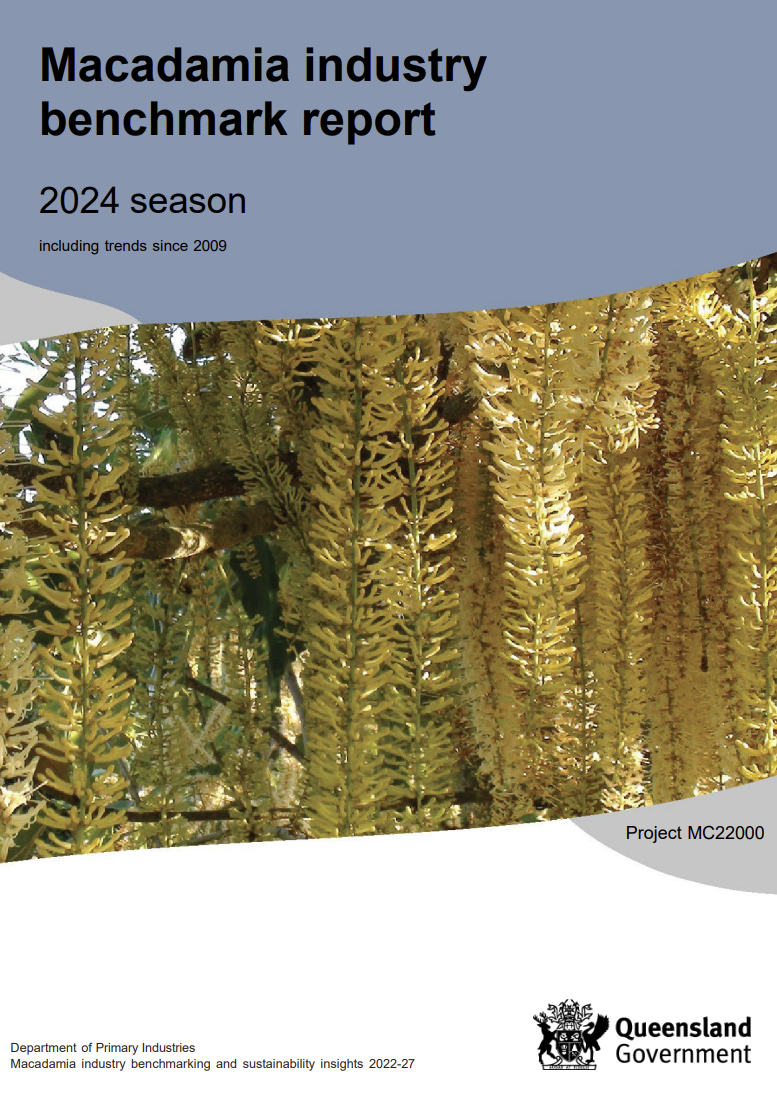- HOME
- NEWS
- EVENTS
- INDUSTRY RESOURCES
In The Orchard
- Biology
- Canopy management
- Environment
- Growing guides & manuals
- Harvest, post-harvest handling & quality
- Irrigation & drainage management
- Nutrition & soil health
- Orchard floor management
- Pests & diseases & crop protection
- Pollination
- Productivity, business & finance
- Varieties, propagation & new plantings
This is a search area with something cool written - SUPPLIERS
- FACTS & FIGURES
- LEVY FUNDED PROJECTS
- CONTACT US
- SHOP
- ABOUT
- MEMBERSHIP
- CLASSIFIEDS
Macadamia industry benchmarking report 2024
About the benchmarking project
The 2024 macadamia industry benchmark report is available to all growers and industry stakeholders. The report covers the 2024 season as well as long term trends since benchmarking began in 2009. Analyses include seasonal limitations, productivity, profitability, kernel recovery, factory rejects, production costs and resource inputs such as water and energy. All major production regions are represented and compared.
Of the 275 farms represented in the report, 231 were bearing last season, representing over 31,500 tonnes of nut-in-shell or approximately 54% of national production. Operating cost data was provided by 87 farms and resource use data was sourced from 109 farms.
Participation in benchmarking is free to all Australian growers, delivered through the levy-funded Macadamia industry benchmarking and sustainability insights 2022-2027 project (MC22000). All participants receive a personalised, confidential farm benchmark report, comparing their productivity, quality, costs (optionally) and resource use with the averages of other similar farms based on region, farm size and tree age. Participants also have the option to attend free regional Benchmark Group meetings to network with other growers in their area and discuss seasonal outcomes and farm management approaches.
Data collection for the 2025 season has commenced. Existing participants will be sent a link to complete their 2025 information online over the coming weeks. For those looking to join benchmarking all you need is details of your plantings and seasonal consignments. You can provide your consignment details yourself if you wish, or alternatively the benchmark team can source these from your processor(s) with your consent. If you have any questions or would like further information don’t hesitate to contact your local benchmark team member below. You can download the 2024 industry report and the 2025 benchmarking data collection form by following the links below.
Download the 2024 industry benchmarking report here.
Download the 2025 benchmarking data collection form here.
Queensland
Grant Bignell - QDPI
07 5381 1334
New South Wales
Jeremy Bright - NSW DPIRD
02 6626 1346

This report has been produced as part of the “Macadamia industry benchmarking and sustainability insights 2022-27” project (MC22000). This is a joint initiative of the Department of Agriculture and Fisheries, the University of Southern Queensland, NSW Department of Primary Industries and the Queensland Alliance for Agriculture and Food Innovation. The project has been funded by Hort Innovation, using the macadamia research and development levy and contributions from the Australian Government. Hort Innovation is the grower-owned, not-for-profit research and development corporation for Australian horticulture. The Queensland Government has also co-funded the project through the Department of Agriculture and Fisheries.
Downloads
Our Events
Proudly Supported By

This website has been partly funded by Hort Innovation, using the macadamia research and development levy and contributions from the Australian Government.






